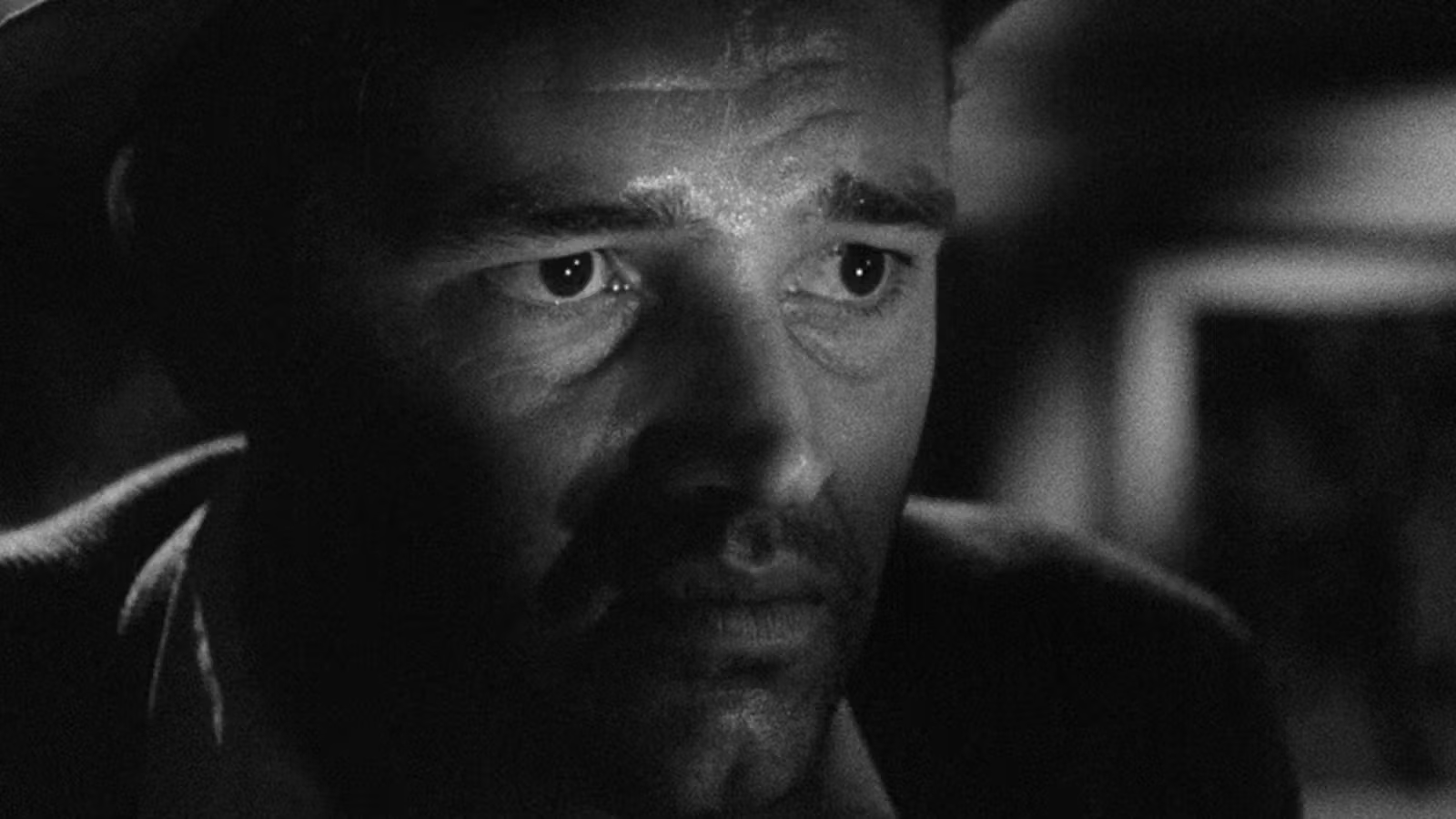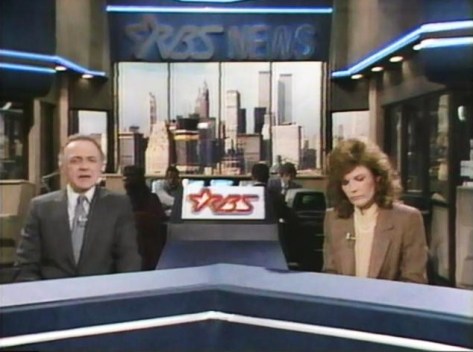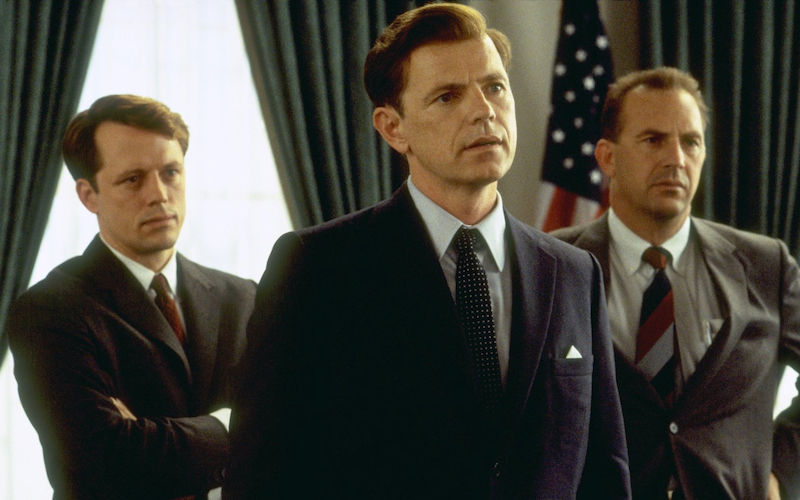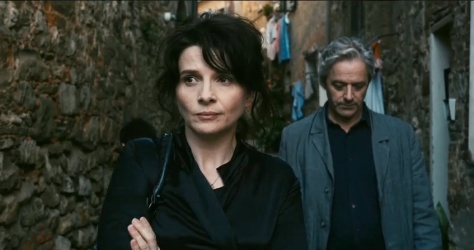By Dennis Hartley
(Originally posted on Digby’s Hullabaloo on July 5, 2025)

Ah, July 4th weekend. Nothing kicks off Summer like an all-American holiday that encourages mass consumption of animal flesh (charcoal-grilled to carcinogenic perfection), binge drinking, and subsequent drunken handling of explosive materials. Well, for most people. Being the semi-reclusive weirdo that I am (although I prefer the term “gregarious loner”), nothing kicks off summer for me like holing up for the holiday weekend with an armload of my favorite rock ‘n’ roll musicals. For your consideration (or condemnation) here are my Top 20. Per usual, I present them in no ranking order. For those about to rock…I salute you.
American Pop – Within the realm of animated films, Ralph Bakshi’s name may not be as universally recognizable (or revered) as Walt Disney or Studio Ghibli, but I would consider him no less of an important figure in the history of the genre. During his heyday (1972-1983) the director pumped out 8 full-length feature films (Fritz the Cat, Heavy Traffic, Wizards, et. al.) using his signature blend of live-action, rotoscoping, and traditional cel animation.
In his 1981 film American Pop, director Bakshi and screenwriter Ronni Kern ambitiously attempt to distill the history of 20th Century American popular music (essentially from Vaudeville to Punk) in 90 minutes. The narrative is framed via the triumphs and travails of four generations of a Russian-Jewish immigrant family (all of whom are involved one way or the other in the music business). Intelligently written, beautifully animated, with an eclectic soundtrack (everything from “Swanee” to “Pretty Vacant”).
Bandwagon – A taciturn musician, still reeling from a recent breakup with his girlfriend, has a sudden creative spurt and forms a garage band. The boys pool resources, buy a beat-up van (the “Band” wagon, get it?) and hit the road as Circus Monkey. The requisite clichés ensue: The hell-gigs, backstage squabbles, record company vultures, and all that “art vs commerce” angst; but John Schultz’s crisp writing and directing and mostly unknown cast carry the day.
Indie film stalwart Kevin Corrigan stands out, as does Chapel Hill music scene fixture Doug McMillan (lead singer of The Connells) as a Zen-like road manager (the director is one of McMillan’s ex-band mates). The original soundtrack is an excellent set of power-pop (you’ll have “It Couldn’t Be Ann” in your head for days). Anyone who has been a “weekend rock star” will recognize many of the scenarios; any others who apply should still be quite entertained.
The Commitments – “Say it leoud. I’m black and I’m prewd!” Casting talented yet unknown actor/musicians to portray a group of talented yet unknown musicians was a stroke of genius by director Alan Parker. This “life imitating art imitating life” trick works wonders. In some respects, The Commitments is an expansion of Parker’s 1980 film Fame; except here the scenario switches from New York to Dublin (there’s a bit of a wink in a scene where one of the band members breaks into a parody of the Fame theme).
However, these working-class Irish kids don’t have the luxury of attending a performing arts academy; there’s an undercurrent referencing the economic downturn in the British Isles. The acting chemistry is superb, but it’s the musical performances that shine, especially from (then) 16-year old Andrew Strong, who has the soulful pipes of someone who has been smoking 2 packs a day for decades. In 2007, cast member/musician Glen Hansard co-starred in John Carney’s surprise low-budget hit, Once, a lovely character study that would make a perfect double bill with The Commitments.
Dance Craze – In the book Reggae International, a collection of essays compiled by Stephen Davis and Peter Simon, sub-culturalist Dick Hebdige writes about the UK’s short-lived yet highly influential “2-tone” movement of the early 1980s:
Behind the fusion of rock and reggae lay the hope that the humour, wit, and style of working-class kids from Britain’s black and white communities could find a common voice in 2-tone; that a new, hybrid cultural identity could emerge along with the new music. The larger message was usually left implicit. There was nothing solemn or evangelical about 2-tone. It offered an alternative to the well-intentioned polemics of the more highly educated punk groups, who tended to top the bill at many of the Rock Against Racism gigs. […]
Instead of imposing an alienating, moralising discourse on a popular form (alien at least to their working-class constituency), bands like the Specials worked in and on the popular, steered clear of the new avant-gardes, and stayed firmly within the “classical” definitions of 50s and early 60s rock and pop: that this was music for Saturday nights, something to dance to, to use.
In 1981, a concert film called Dance Craze was released. Shot in 1980 and directed by Joe Massot (The Song Remains the Same), it was filmed at several venues, showcasing six of the most high-profile bands in the 2 Tone Records stable: Bad Manners, The English Beat, The Bodysnatchers, Madness, The Selector, and The Specials.
I’d heard about this Holy Grail, but it was a tough film to catch; outside of its initial theatrical run in the UK (and I’m assuming very limited engagements here in the colonies) it had all but vanished in the mists of time…until a 2024 restoration and re-release of the film.
This film is nirvana for genre fans; all six bands are positively on fire (this is music for Saturday nights-I guarantee you’ll be dancing in your living room). Thanks to cinematographer Joe Dunton’s fluid “performer’s-eye view” camerawork and tight editing by Ben Rayner and Anthony Sloman, you not only feel like you are on stage with the band, but you get a palpable sense of the energy and enthusiasm feeding back from the audience.
Expresso Bongo– This 1959 British gem from Val Guest undoubtedly inspired Julien Temple’s Absolute Beginners– from the opening tracking shot giddily swooping through London’s Soho district coffee bar/music club milieu, to its narrative about naive show biz beginners with stars in their eyes and exploitative agents’ hands in their wallets. Laurence Harvey plays his success-hungry hustler/manager character with chutzpah. The perennially elfin Cliff Richard plays it straight as Harvey’s “discovery”, Bongo Herbert.
The film includes performances by the original Shadows (Richards’ backup band), featuring guitar whiz Hank Marvin (whom Jeff Beck and Jimmy Page have cited as a seminal influence). The smart, droll screenplay (by Julian More and Wolf Mankowitz) is far more sophisticated than most of the U.S. produced rock’ n ’roll musicals of the era (films like The Girl Can’t Help It and Rock Rock Rock do feature priceless performance footage, but the story lines are dopey).
A Hard Day’s Night– This 1964 masterpiece has been often copied, but never equaled. Shot in a semi-documentary style, the film follows a “day in the life” of John, Paul, George and Ringo at the height of their youthful exuberance and charismatic powers. Thanks to the wonderfully inventive direction of Richard Lester and Alun Owen’s cleverly tailored script, the essence of what made the Beatles “the Beatles” has been captured for posterity.
Although it’s meticulously constructed, Lester’s film has a loose, improvisational feel; and it feels just as fresh and innovative as it was when it first hit theaters all those years ago. To this day I catch subtle gags that surprise me (ever notice John snorting the Coke bottle?). Musical highlights: “I Should Have Known Better”, “All My Loving”, “Don’t Bother Me”, “Can’t Buy Me Love”, and the fab title song.
Hedwig and the Angry Inch – It’s your typical love story. A German teen named Hansel (John Cameron Mitchell) falls for a G.I., undergoes a less than perfect sex change so they can marry, and ends up seduced and abandoned in a trailer park somewhere in Middle America. The desperate Hansel opts for the only logical way out…he creates an alter-ego named Hedwig, puts a glam-rock band together, and sets out to conquer the world. How many times have we heard that tired tale?
But seriously, this is an amazing tour de force by Mitchell, who not only acts and sings his way through this entertaining musical like nobody’s business, but directed and co-wrote (with composer Steven Trask, with whom he also co-created the original stage version).
Help! – Compared to its predecessor (see above), this is a much fluffier affair, from a narrative standpoint (Ringo is being chased by a religious cult who wish to offer him up as a human sacrifice to their god; hilarity ensues). But still, it’s a lot of fun, if you’re in a receptive mood. The Beatles themselves exude enough goofy energy and effervescent charm to make up for the wafer-thin plot line.
Marc Behm and Charles Wood’s script has a few good zingers; but the biggest delights come from director Richard Lester’s flair for visual invention. For me, the best parts are the musical sequences, which are imaginative, artful, and light years ahead of their time (essentially the blueprint for MTV, which was still 15 years down the road).
And of course, the Beatles’ music was evolving in leaps and bounds by 1965. It has a killer soundtrack; in addition to the classic title song, you’ve got “Ticket to Ride”, “You’ve Got to Hide Your Love Away”, “The Night Before” and “I Need You”, to name a few. Don’t miss the clever end credits!
Jailhouse Rock-The great tragedy of Elvis Presley’s film career is how more exponentially insipid each script was from the previous one. Even the part that mattered the most (which would be the music) progressively devolved into barely listenable schmaltz (although there were flashes of brilliance, like the ’69 Memphis sessions).
Fortunately, however, we can still pop in a DVD of Jailhouse Rock, and experience the King at the peak of his powers before Colonel Parker took his soul. This is one of the few films where Elvis actually gets to breathe a bit as an actor (King Creole is another example).
Although he basically plays himself (an unassuming country boy with a musical gift from the gods who becomes an overnight sensation), he never parlayed the essence of his “Elvis-ness” less self-consciously before the cameras as he does here. In addition to the iconic “Jailhouse Rock” song and dance number itself, Elvis rips it up with “Treat Me Nice” and “(You’re So Square) Baby I Don’t Care”.
Ladies and Gentlemen, the Fabulous Stains– A punk version of A Star is Born. This 1981 curio (initially shelved from theatrical distribution) built a cult base, thanks to showings on USA Network’s Night Flight back in the day. As a narrative, this effort from record mogul turned movie director Lou Adler would have benefited from some script doctoring (Slap Shot screenwriter Nancy Dowd is off her game here) but for punk/new wave nostalgia junkies, it’s still a great time capsule.
Diane Lane plays a nihilistic mall rat who breaks out of the ‘burbs by forming an all-female punk trio with her two cousins (played by Marin Kanter and then-15 year-old Laura Dern). They dub themselves The Stains. Armed with a mission statement (“We don’t put out!”) and a stage look possibly co-opted from Divine in Pink Flamingos, this proto-riot grrl outfit sets out to conquer the world (and learn to play their instruments along the way).
Music biz clichés abound, but it’s a guilty pleasure, due to real-life rockers in the cast. Fee Waybill and Vince Welnick of The Tubes are a hoot as washed up glam rockers. The fictional punk band, The Looters (fronted by an angry young Ray Winstone) features Paul Simonon from The Clash and Steve Jones and Paul Cook of the Sex Pistols.
The Phantom of the Paradise – To describe writer-director Brian DePalma’s 1974 horror schlock-rock musical take-off on The Phantom of the Opera as “over the top” would be understatement.
Paul Williams (who composed the memorable soundtrack) chews all the available scenery as ruthless music mogul “Swan”, a man with a curious predilection for insisting his artists sign their (somewhat long-term) contracts in blood. One who becomes so beholden is Winslow (William Finely) a talented composer hideously disfigured in a freak accident (and that’s only the least of his problems). Jessica Harper plays the object of poor Winslow’s unrequited desire, who is slowly falling under Swan’s evil spell.
Musical highlights include the haunting ballad “Old Souls” (performed by Harper, who has a lovely voice) and “Life at Last”, a glam rock number performed by “The Undead”, led by a scene-stealing Gerrit Graham camping it up as the band’s lead singer “Beef”.
Quadrophenia –The Who’s eponymous 1973 double-LP rock opera, Pete Towshend’s musical love letter to the band’s first g-g-generation of most rabid British fans (aka the “Mods”) inspired this 1979 film from director Franc Roddam. With the 1964 “youth riots” that took place at the seaside resort town of Brighton as catalyst, Roddam fires up a visceral character study in the tradition of the British “kitchen sink” dramas that flourished in the early 1960s.
Phil Daniels gives an explosive, James Dean-worthy performance as teenage “Mod” Jimmy. Bedecked in their trademark designer suits and Parka jackets, Jimmy and his Who (and ska)-loving compatriots cruise around London on their Vespa and Lambretta scooters, looking for pills to pop, parties to crash and “Rockers” to rumble with. The Rockers are identifiable by their greased-back hair, leathers, motorbikes, and their musical preference for likes of Elvis and Gene Vincent.
Look for a very young (and much less beefier) Ray Winstone (as a Rocker) and Sting (as a Mod bell-boy, no less). Wonderfully acted by a spirited cast, it’s a heady mix of youthful angst and raging hormones, supercharged by the power chord-infused grandeur of the Who’s music.
Rock and Roll High School – In this 1979 cult favorite from legendary “B” movie producer Roger Corman, director Alan Arkush evokes the spirit of those late 50s rock’ n’ roll exploitation movies (right down to having 20-something actors portraying “students”), substituting The Ramones for the usual clean-cut teen idols who inevitably pop up at the prom dance.
I’m still helplessly in love with P.J. Soles, who plays Vince Lombardi High School’s most devoted Ramones fan, Riff Randell. The great cast of B-movie troupers includes the late Paul Bartel (who directed several of his own films under Corman’s tutelage) and Mary Waronov (hilarious as the very strict principal.) R.I.P. Joey, Dee Dee, Johnny and Tommy.
The Rocky Horror Picture Show– The decades have not diminished the cult appeal of Jim Sharman’s film adaptation of Richard O’Brien’s original stage musical about a hapless young couple (Barry Bostwick and Susan Sarandon) who stumble into the lair of one Dr. Frank-N-Furter (Tim Curry) one dark and stormy night.
Much singing, dancing, cross-dressing, axe-murdering, cannibalism and hot sex ensues-with broad theatrical nods to everything from Metropolis, King Kong and Frankenstein to cheesy 1950s sci-fi, Bob Fosse musicals, 70s glam-rock and everything in between. Runs out of steam a bit in the third act, but with such spirited performances (and musical numbers) you won’t notice. O’Brien co-stars as the mad doctor’s hunchbacked assistant, Riff-Raff.
Stardust – Michael Apted directed this 1974 sequel to Claude Whatham’s 1973 film That’ll Be the Day. David Essex reprises his role as restless seeker Jim MacLaine, who has finally found his true passion: music.
The first third traces MacLaine’s Beatle-like rise to fame with his beat combo “The Stray Cats” (it’s a safe bet Brian Setzer and band mates saw this film back in the day and “re-appropriated” the name).
With massive success comes the inevitable backstage squabbles and jealousies; eventually MacLaine is surrounded by music company weasels and yes-men whispering in his ear to dump his “backup” band and pursue a solo career as a rock god (who can say “no” to that?). Then comes the inevitable decline: too much drugs, sex and rock ‘n’ roll excess.
One of the best (and most realistic) films ever made about the music business. Clever casting of a number of veteran UK rockers like Adam Faith, Dave Edmunds, Keith Moon, Marty Wylde and Paul Nicholas adds greatly to the authenticity.
Starstruck-Gillian Armstrong primarily built her rep on female empowerment dramas like My Brilliant Career, Mrs. Soffel, High Tide, The Last Days of Chez Nous and Charlotte Gray; making this colorful, sparkling and energetic 1982 trifle an anomaly in the Australian director’s oeuvre. But it’s a lot of fun-and I’ve watched it more times than I’d care to admit.
It does feature a strong female lead , free-spirited Jackie (Jo Kennedy) who aspires to be Sydney’s next new wave singing sensation, with the help of her kooky, entrepreneurial-minded (and frequently truant) teenage cousin Angus (Ross O’Donovan) who has designated himself as publicist/agent/manager. Goofy, high-spirited and filled to the brim with catchy power pop (with contributions from members of Split Enz and Mental as Anything). Musical highlights include “I Want to Live in a House” and “Monkey in Me”.
Still Crazy– Q: What do you call a musician without a girlfriend? A: Homeless! If that old chestnut still makes you chortle, then you will “get” this movie. Painting a portrait of an “almost great” 70’s British band reforming for a 90’s reunion tour, Brian Gibson’s 1998 dramedy Still Crazy does Spinal Tap one better (you could say this film goes to “eleven”, actually). Unlike similar rock ‘n’ roll satires, it doesn’t mock its characters, rather it treats them with the kind of respect that comes from someone who genuinely loves the music.
Great performances abound. Bill Nighy stands out in a hilarious yet poignant performance as the insecure lead singer of Strange Fruit. Prog-rock devotees will love the inside references, and are sure to recognize that the character of the “lost” leader/guitarist is based on Syd Barrett. Still, you don’t need to be a rabid rock geek to enjoy this film; its core issues, dealing with mid-life crisis and the importance of following your bliss, are universal themes.
Foreigner’s Mick Jones and Squeeze’s Chris Difford are among the contributors to the original soundtrack. I also recommend Gibson’s 1980 debut Breaking Glass (a similar but slightly darker rumination on music stardom). Sadly, the director died at age 59 in 2004.
Tokyo Pop –This 1988 film is a likable entry in the vein of other 80s films like Starstruck, Breaking Glass, Desperately Seeking Susan, Smithereens and The Fabulous Stains. Star Carrie Hamilton’s winning screen presence helps to buoy the fluffy premise. Hamilton (who does her own singing) plays a struggling wannabe rock star who buys a one-way ticket to Tokyo at the invitation of a girlfriend. Unfortunately, her flaky friend has flown the coop, and our heroine is stranded in a strange land. “Fish out of water” misadventures ensue, including cross-cultural romance with all the usual complications.
For music fans, it’s a fun time capsule of the late 80s Japanese music scene, and the colorful cinematography nicely captures the neon-lit energy of Tokyo nightlife. Director Fran Rubel Kuzui (who co-wrote the screenplay with Lynn Grossman) later directed the 1992 feature film Buffy the Vampire Slayer and went on to serve as executive producer for the eponymous TV series. Sadly, Hamilton (Carol Burnett’s daughter) died of cancer at age 38 in 2002.
Tommy –There was a time (a long, long, time ago) when some of my friends insisted that the best way to appreciate The Who’s legendary rock opera was to turn off the lamps, light a candle, drop a tab of acid and listen to all four sides with a good pair of cans. I never got around to making those arrangements, but it’s a pretty good bet that watching director Ken Russell’s insane screen adaptation is a close approximation. If you’re not familiar with his work, hang on to your hat (I’ll put it this way-Russell was not known for being subtle).
Luckily, the Who’s music is powerful enough to cut through the visual clutter, and carries the day. Two band members have roles-Roger Daltrey as the deaf dumb and blind Tommy, and Keith Moon has a cameo as wicked Uncle Ernie (Pete Townshend and John Entwistle only appear briefly).
The cast is an interesting cross of veteran actors (Oliver Reed, Ann-Margret, Jack Nicholson) and well-known musicians (Elton John, Eric Clapton, Tina Turner). Musical highlights include “Pinball Wizard”, “Eyesight to the Blind” “The Acid Queen” and “I’m Free”.
True Stories – Musician/raconteur David Byrne enters the Lone Star state of mind with this subtly satirical Texas travelogue from 1986. It’s not easy to pigeonhole; part road movie, part social satire, part long-form music video, part mockumentary. Episodic; basically a series of quirky vignettes about the generally likable inhabitants of sleepy Virgil, Texas. Among the town’s residents: John Goodman, “Pops” Staples, Swoosie Kurtz and the late Spalding Gray.
Once you acclimate to “tour-guide” Byrne’s bemused anthropological detachment, I think you’ll be hooked. Byrne directed and co-wrote with actor Stephen Tobolowsky and actress/playwright Beth Henley (Crimes of the Heart, Miss Firecracker). The outstanding cinematography is by Edward Lachman. Byrne’s fellow Talking Heads have cameos performing “Wild Wild Life”, and several other songs by the band are in the soundtrack.






























































































































